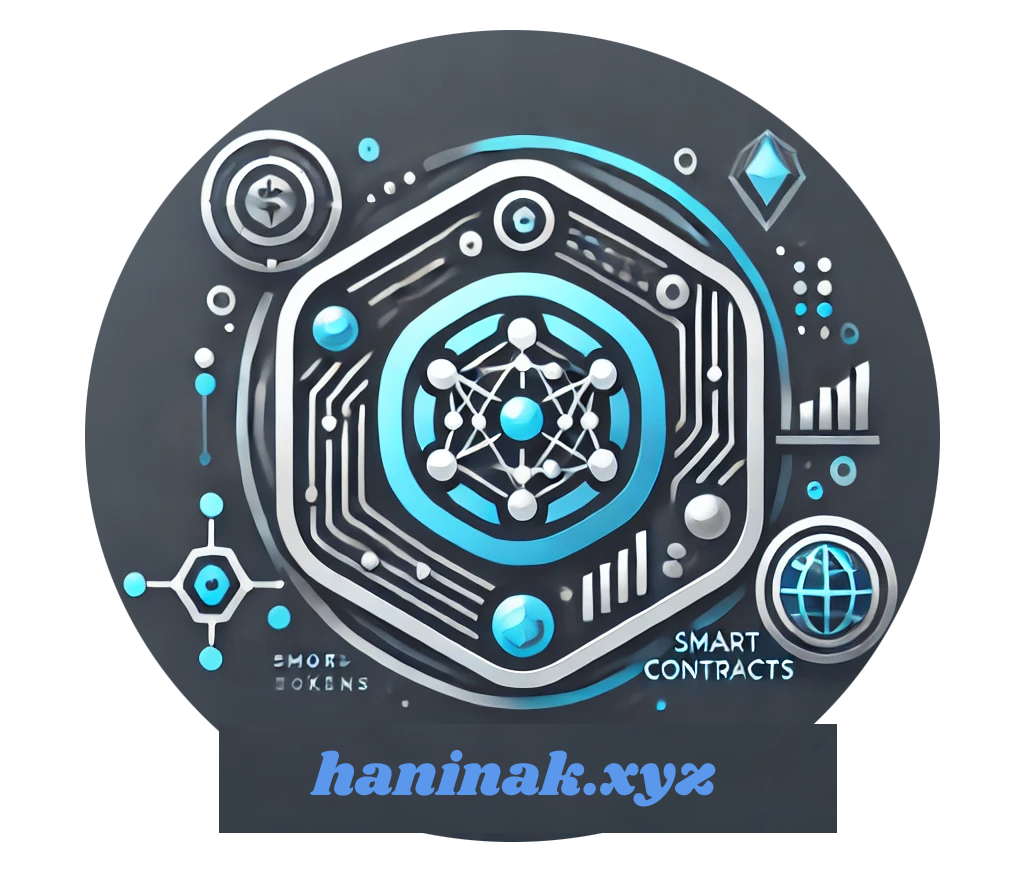What is blockchain interoperability, and how does it work?
Blockchain interoperability lets different blockchain networks talk to each other and share data. It makes it possible for blockchains to send and receive information. This is key in a world where we have many blockchain systems.
It helps in making apps that work on more than one blockchain. These apps use smart contracts on various blockchains. This way, blockchains can work together like computers on the internet.
In the fast-changing Web3 world, over 100 layer-1 blockchains exist. Each one is good at something different. Layer-2 and layer-3 networks are also growing, making sure everything is secure.
This shows how important it is for blockchains to work together. It makes it easy to move money and data between them. This is crucial for making the most of blockchain technology.
Developers want to make apps that work across different blockchains. These apps need to keep everything in sync and have one place for all money. Traditional systems also need to work with different blockchains.
Blockchain interoperability helps move money and data between blockchains. It makes things more useful and efficient. This could lead to more people using blockchain technology in all kinds of industries.
Understanding Blockchain Interoperability Fundamentals
Blockchain interoperability is key in today’s digital world. It lets different blockchain networks talk and share information smoothly. This is vital for making decentralized apps work better together and creating a more connected digital space. Let’s explore the main ideas and parts that make blockchain interoperability work.
The Core Concepts of Cross-Chain Communication
Blockchain interoperability focuses on two main areas: exchanging digital assets and sharing data freely. Digital asset exchange makes it safe to move and swap digital items like coins or tokens between different networks. Arbitrary data exchange lets actions on one blockchain affect another, even if it’s not about money.
The Role of Decentralized Networks in Interoperability
Decentralized networks are essential for keeping cross-chain interactions safe and trustworthy. They use Consensus Algorithms to check and confirm transactions, keeping all connected blockchains in sync. Thanks to Peer-to-Peer Networks, these systems can share information securely and openly between different blockchain platforms.
Key Components of Blockchain Communication
The main parts of blockchain interoperability are cross-chain messaging protocols, state verification, and relay mechanisms. Together, they make it easy to share data and assets between networks, keeping transactions safe and reliable.
| Component | Description |
|---|---|
| Cross-chain Messaging Protocols | These protocols help send messages and data safely between different blockchain networks. They make cross-chain talks and teamwork possible. |
| State Verification | This step makes sure one blockchain’s state matches another’s. It keeps cross-chain dealings honest and reliable. |
| Relay Mechanisms | Relay mechanisms help by passing on info and transactions between networks. They make sure everything works smoothly and together. |

Using these key parts, blockchain interoperability solutions open up new ways to share digital assets and integrate apps. They help build a more open and connected digital world.
The Growing Importance of Cross-Chain Solutions
The blockchain world has grown fast, with over 100 layer-1 blockchains and many more layer-2 and layer-3 networks. In this complex Web3 world, cross-chain solutions are becoming more important. They help solve the blockchain trilemma by using different chains for their strengths. This boosts scalability and opens up new business models.
Blockchains like Bitcoin and Ethereum can’t directly talk to each other. This makes it hard to move digital assets and data smoothly. Users can’t easily swap BTC for ETH without a middleman like a cryptocurrency exchange.
Other blockchain networks face similar issues. Assets like USDT can’t be sent directly from Ethereum to Binance Smart Chain or other blockchains.
Platforms like Polkadot, Cosmos, and Harmony offer cross-chain tech solutions. They aim to fix this problem by making different blockchain networks work together and share resources.
Cross-chain tech opens up new areas in decentralized finance (DeFi), tokenizing assets, digital currencies, gaming, and supply chain management. It makes DeFi better by letting users use more protocols and services across different networks.
The need for easy data and asset exchange in decentralized applications (DApps) drives the importance of cross-chain solutions. With cross-chain tech, developers can build more flexible and immutable apps. These apps can use the best features of various blockchain networks.
| Interoperability Benefits | Challenges | Key Functions of Smart Contracts in Cross-Chain Bridges |
|---|---|---|
|
|
|

As the blockchain world keeps growing, the need for easy interoperability becomes more urgent. Cross-chain solutions will be key in unlocking the full potential of Digital Currencies, Decentralized Applications (DApps), and Immutability in Web3.
Blockchain Technologies and Techniques in Cross-Chain Integration
The blockchain world is changing fast, and cross-chain integration is key to this change. With more blockchain networks popping up, it’s vital to share data and assets smoothly. Blockchain tech helps make this sharing safe and efficient.
Consensus Mechanisms Across Different Chains
One big challenge is making sure different blockchain networks can talk to each other. These networks use things like Proof of Work and Proof of Stake to stay secure. To work together, they need to be able to verify each other’s transactions.
Smart Contract Integration Methods
Smart contracts are digital agreements that run on many blockchain networks. They use Cryptography, Mining, and Distributed Ledger Technology to work across different networks. This makes sure transactions are processed reliably and consistently.
Security Protocols for Cross-Chain Transactions
Keeping cross-chain transactions safe is crucial. These transactions involve risks, so strong security measures are needed. Advanced Cryptography and Distributed Ledger Technology help protect the data exchanged between networks.
Thanks to these blockchain technologies, we’re moving towards a more connected blockchain world. This opens up new ways for value, information, and functionality to flow freely across different platforms.
Types of Blockchain Interoperability Solutions
The blockchain world is growing fast, and making different networks work together is key. Solutions for blockchain interoperability help connect these systems. This lets digital assets and data move freely across platforms. Let’s look at the main types of solutions that are changing the game for Peer-to-Peer Networks and Decentralized Applications (DApps).
Token Bridges
Token bridges help move digital assets between blockchain networks. They use different methods like lock and mint, burn and mint, or lock and unlock. This ensures tokens are moved safely between chains.
Programmable Token Bridges
Programmable token bridges add more power to token bridging. They allow for data sharing, smart contract interactions, and complex transactions. This makes cross-chain work more advanced.
Interoperability Approaches
- Web2 Validation: This method uses web2 tools like APIs and platforms to make networks work together.
- Notary Schemes: Notary schemes use trusted groups to check and approve transactions between networks.
- Sidechains/Relay Chains: These create extra networks linked to the main one. They help move assets and data.
- Hash-Locking: This technique secures transactions between networks. It ensures assets are exchanged safely.
Each solution has its own strengths and uses. As the blockchain world grows, we’ll see more improvements. This will help Peer-to-Peer Networks and Decentralized Applications (DApps) become more popular.
| Interoperability Solution | Description | Key Features |
|---|---|---|
| Token Bridges | Facilitate the exchange of digital assets between blockchain networks | Lock and mint, burn and mint, or lock and unlock mechanisms |
| Programmable Token Bridges | Combine token bridging with arbitrary messaging capabilities | Enable cross-chain data sharing, smart contract interactions, and complex transactions |
| Web2 Validation | Leverage existing web2 infrastructure, such as APIs and centralized platforms, for interoperability | Utilize existing systems to facilitate cross-chain communication |
| Notary Schemes | Rely on a group of trusted entities to validate and authorize cross-chain transactions | Serve as a bridge between different blockchain networks |
| Sidechains/Relay Chains | Create secondary blockchain networks connected to the main blockchain | Enable the transfer of assets and data between different blockchain networks |
| Hash-Locking | Use cryptographic techniques to secure cross-chain transactions | Ensure the atomic exchange of assets between blockchain networks |
Benefits of Blockchain Interoperability for Business
Blockchain interoperability brings big wins for businesses. It changes how they work together. It makes it easier for different blockchain networks to talk to each other. This boosts how much they can do, makes moving assets around better, and cuts costs.
Enhanced Scalability and Performance
The blockchain world is all about getting better, bigger, and more private. By 2025, we’ll see more networks working together. This means businesses can use the best of each network to get better at what they do.
They can handle more transactions, meet new market needs, and try out new things. This is all thanks to working with different blockchains.
Improved Asset Transfer and Liquidity
Blockchain interoperability makes it easy to move digital money and other assets between networks. This opens up new ways for businesses to make money. It makes trading and managing money easier across different networks.
This makes the digital world more connected and dynamic. It’s good for businesses and their customers.
Cost Reduction and Efficiency Gains
Blockchain interoperability helps businesses save money and work better. It makes processes smoother and cuts out the middlemen. This makes blockchain solutions more cost-effective.
It also makes it easier to talk and share data in real-time. This means businesses can serve customers faster and work more efficiently. In the end, this can lead to big savings and more profit for businesses.







